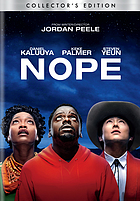 Halloween is a perfect time to dim the lights, curl up under a cozy blanket, and watch your favorite spooky movie. But why do we love frightening films so much? While seemingly paradoxical, being scared under the right circumstances not only can be fun but also can have psychological benefits.
Halloween is a perfect time to dim the lights, curl up under a cozy blanket, and watch your favorite spooky movie. But why do we love frightening films so much? While seemingly paradoxical, being scared under the right circumstances not only can be fun but also can have psychological benefits.
Research shows that part of the appeal of horror is in the thrill of fear itself. The suspense and unexpected twists provide an immersive experience that can be exhilarating. Fright can trigger our fight or flight response, causing a release of adrenaline and neurotransmitters such as dopamine and norepinephrine that results in heightened sensations, a surge of energy, and an elevation in mood. Key to this enjoyment, though, is that this occurs in a safe, controlled environment where people know there is no actua l threat.
l threat.
Scary films also offer a safe way to confront anxieties and fears. This can then help when a real danger arises. A 2020 study found that horror film fans exhibited less psychological stress during the COVID-19 pandemic than those who never watched such films. The researchers hypothesized that horror film watchers learned from their experiences how to understand their bodies’ reactions to frightening situations and how to regulate their emotions. Thus they were able to apply what they learned when faced with a real risk.
Finally, w atching frightening movies with others can have the benefit of helping create greater connections between people. Being vulnerable together can provide a greater sense of intimacy. Likewise, bonding can occur over surviving the same frightening experience. Research suggests that such bonding is linked to oxytocin, which can be released in frightening situations. This hormone facilitates feelings of closeness and affinity among the group.
atching frightening movies with others can have the benefit of helping create greater connections between people. Being vulnerable together can provide a greater sense of intimacy. Likewise, bonding can occur over surviving the same frightening experience. Research suggests that such bonding is linked to oxytocin, which can be released in frightening situations. This hormone facilitates feelings of closeness and affinity among the group.
Still scary films are not for everyone. The same reaction to fear that results in a heightened mood for some may bring about anxiety and panic in others. This can be particularly true of highly empathetic people.
If you are one that enjoys a frightening film, we invite you to check the films in our Wilkie Classic Film Collection, several of which are available in the display on the main floor of the Library by the elevator. We also have DVD players for loan at the Library Services Desk. Finally, let us know what your favorite scary movie on the white board at the entrance at the library. Then grab your popcorn and let the scares begin. Happy Halloween!






